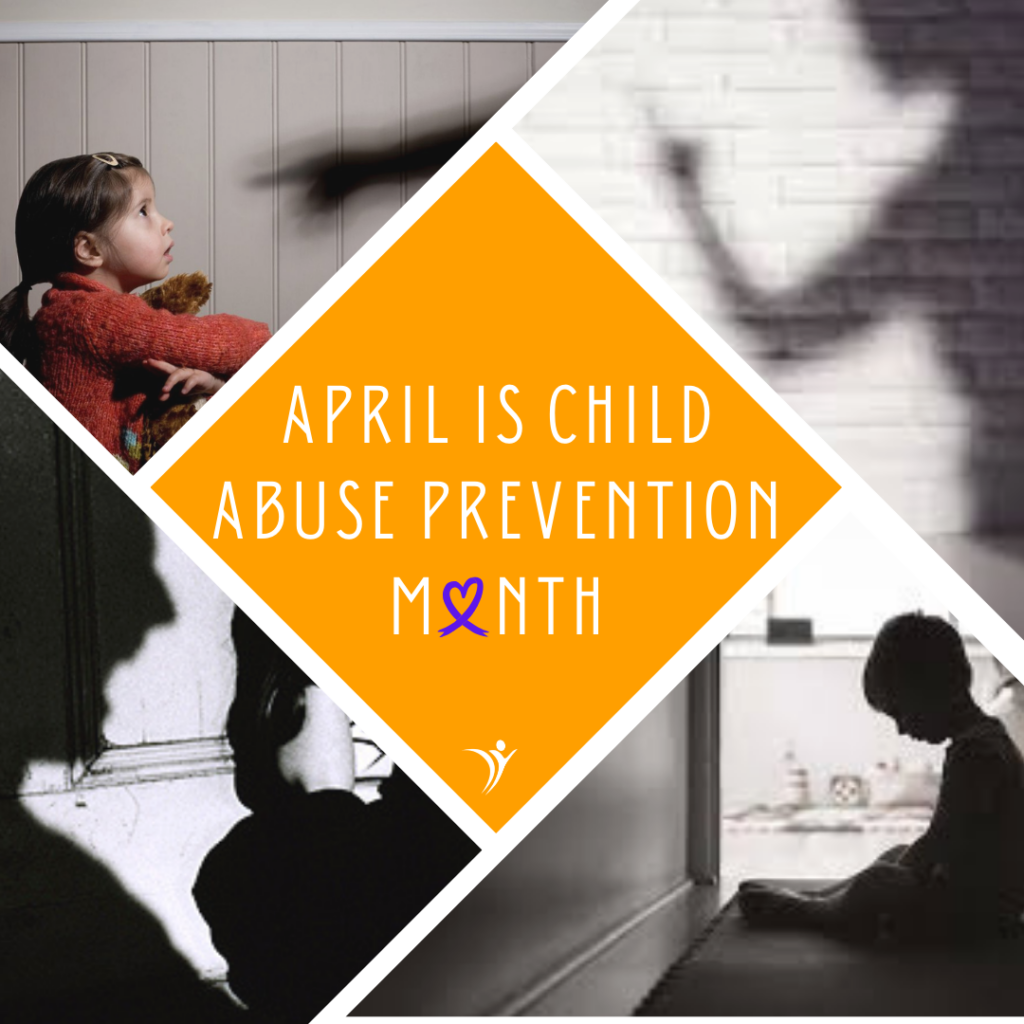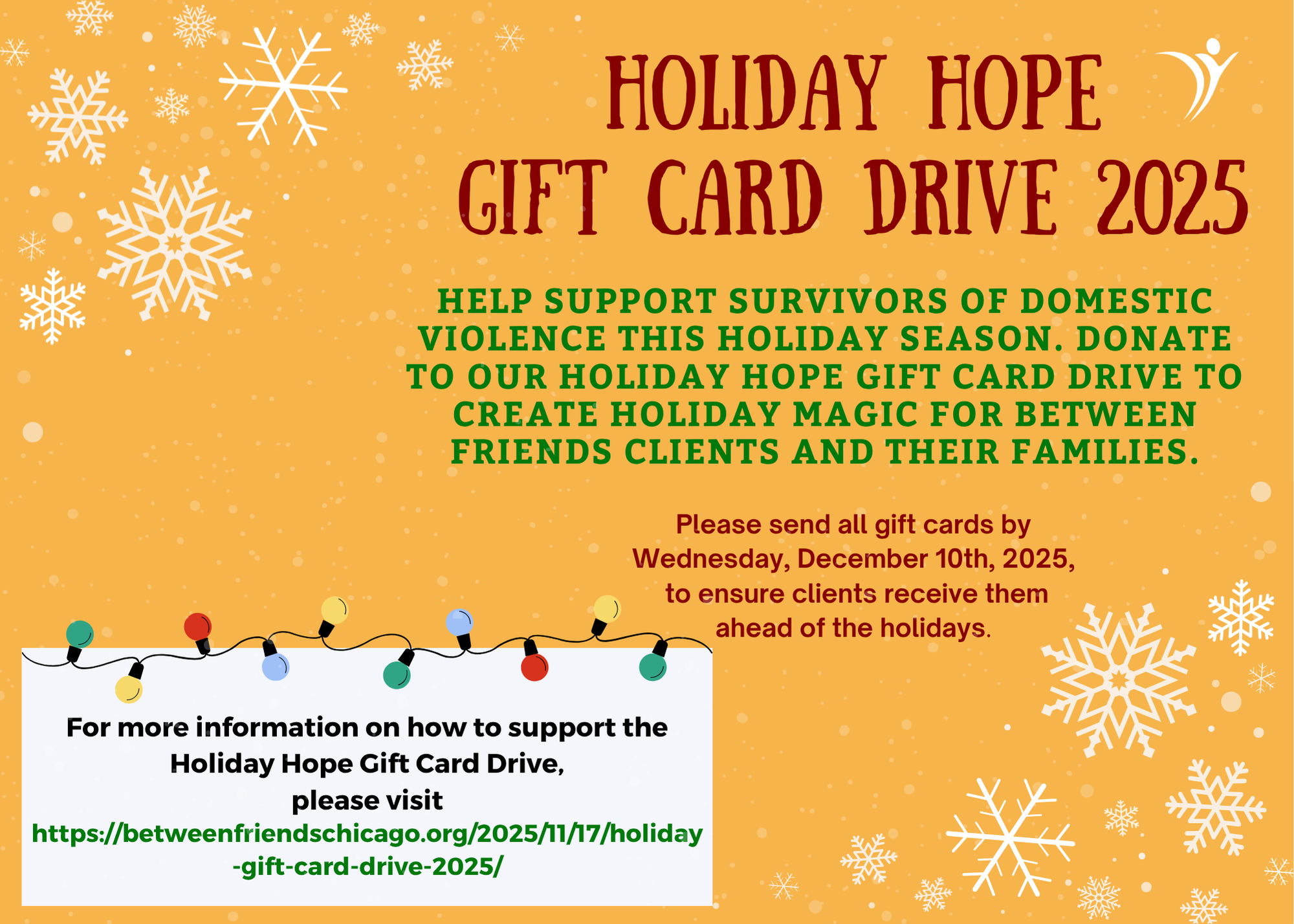Did you know that April is Child Abuse Awareness Month? This is a time to reflect on how harm in our relationships may directly and indirectly impact our kids. It is no surprise that domestic violence does impact them in many profound ways. There is a lot of information establishing the connection between child abuse and domestic violence, so today we would like to reflect on this connection in a deeper, more nuanced way.
At Between Friends, we understand that leaving an abusive relationship is not as simple as many people think. We know that when the relationship ends, the abuse often shifts or morphs into something different, rather than stopping. Sometimes it shifts into something much more dangerous that is far worse for the survivor and their children. Sometimes safety is about staying…staying until a survivor has built the support they need to leave safely. This usually takes time, and planning!
There is a process many survivors go through not only in planning to leave, but also in understanding that there is no hope for permanent change in their relationship. We often forget that most abusive relationships are cyclical and that during the reconciliation and calm stages of the cycle, the person who uses abuse as a means of control goes back to being kind, generous, insightful, charismatic, etc. for a time. This instills hope in survivors and their kids that the person who hurts them can stop and be a loving parent and partner. After a continuation of this cycle (tension building, incident, reconciliation and calm), hope of a healthy and safe life with the person who chooses to be abusive can fade over time.
So, with this foundation in mind, we invite you to think about all the steps survivors take to protect their children during every stage of this process. In the beginning they may try to protect their children by working to improve the relationship with their partner. They may make changes in their own behavior to try to minimize their partner’s outbursts. They may work on communication, in hopes that their partner will learn to be the parent that their children deserve.
Once a survivor recognizes that nothing will change their partner’s behavior, they eventually shift to staying as safe as possible within the relationship while they build up the needed structures to eventually leave safely. This process takes time, and to avoid an escalation in the violence (that could harm their children), a survivor may go along with their partner’s demands. Going along with the relationship when a safer option doesn’t exist? This is a way survivors protect their children.
During this time, they may also be working to protect their children by:
- Trying to hide the abuse from them or shelter them from it
- Not calling police due to how the kids might feel having a parent arrested or how a criminal proceeding might impact their children
- Staying in the relationship because they believe the kids need their other parent
- Getting their children involved in counseling
- Building a strong protective relationship with their kids
- Learning parenting strategies and ways to support their kids emotionally
- Helping their kids to understand that the abuse is not their fault
- Creating a safety plan with their children and discussing ways the kids can maintain safety during a violent incident
- Packing an emergency bag and having it accessible
- Keeping a “burner phone” hidden for emergencies and making sure their kids know how to use it
- Building up their kids’ support systems
- Lining up a safe place to stay or a new school for their children to attend once they leave
- Saving up money they can use to support themselves and their kids after leaving
- Getting their children the necessary medical supports to address trauma or injury
Once the survivor ends the relationship, they sometimes need to stay hidden from their ex-partner to protect themselves and the kids from the new tactics their ex-partner may start to utilize (like stalking, harassing, using child visitation/custody/other systems to continue to inflict harm, telephone and online harassment, threats through third parties). During this time, we may see them protecting their children by:
- Staying in a shelter, if necessary
- Getting an order of protection
- Filing for custody or divorce or fighting for custody of the kids
- Pushing for any court ordered child visitation to be supervised and sometimes compromising their own safety if courts aren’t supporting supervision of visits
- Using safe exchange programs or police stations for custody exchanges
- Relocating (where they live, work, go to school)
- Finding new methods of transportation
- Changing their phone numbers, email addresses, social media info
- Avoiding specific places and people
- Withholding their ex-partner’s access to the children, sometimes against the orders of a court
We need to recognize the complexity of survivors’ options for safety. Sometimes (due to the risks imposed by their partners/ex-partners) there may not be a perfectly safe option for a survivor or their children. They are often faced with making the “least dangerous” rather than the “safe” choice. This is not because they are failing to protect their children, but because their partner/ex-partner poses risk that the survivor cannot fully control or eliminate. But they do respond, and they do protect, and they make the best choices that are available at any given moment.
As outsiders, we may not understand why a survivor makes a particular decision but that is often because we don’t know all the variables they face or understand the risks associated with a particular choice. At Between Friends, we trust survivors and realize that they are the ones with all the information, and they understand the risks better than we do. They are the experts.
Studies have shown that the most powerful factor in a traumatized child’s healing is the stability of their relationship with their non-abusive caregiver. This tells us that if we are invested in children’s welfare, we need to work to preserve their relationship with their survivor parent. When we blame survivors for the risk imposed by their abusive partners and ex-partners, when we claim that they have “failed to protect” their children, we have grossly oversimplified what families facing domestic violence experience and, even more concerning, we run the risk of cutting children off from the very relationship that will most assure their healing and stability.
Remember…protection is more complicated than just leaving!
Related Resources and References:
- Cycle of Harm/Ciclo de Abuso y Poder
- Safe, Stable, and Nurtured: Protective Factors against Poor Physical and Mental Health Outcomes Following Exposure to Adverse Childhood Experiences (ACEs)
- Safety Planning Workbook
- Plan de Seguridad Individual
- Teen Safety Planning Workbook/Plan de Seguridad de los adolescentes


